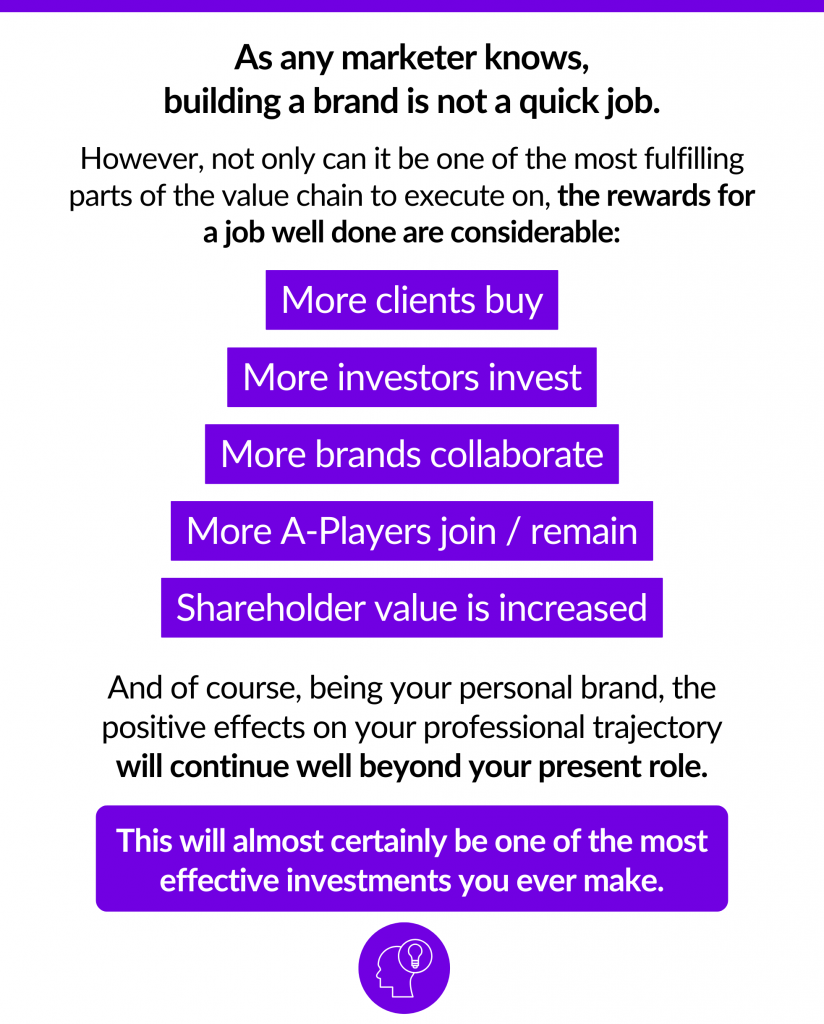Personal branding so potent it should be on the balance sheet

Steve Jobs, Elon Musk, Jeff Bezos, Richard Branson, Lee Iacocca, Jack Welch, Henry Ford…
Generational talents towering above their contemporaries with names that transcend industry and commerce. Their reputations a natural byproduct of the stratospheric shareholder value created.
Today though, cart has come before the horse.
CEO’s are cultivating their personal brand with strategic intent – to enhance the corporate brand and the bottom line.
And with good reason. Because people connect with people, not companies.
Such that when there’s a halo around the person at the top:
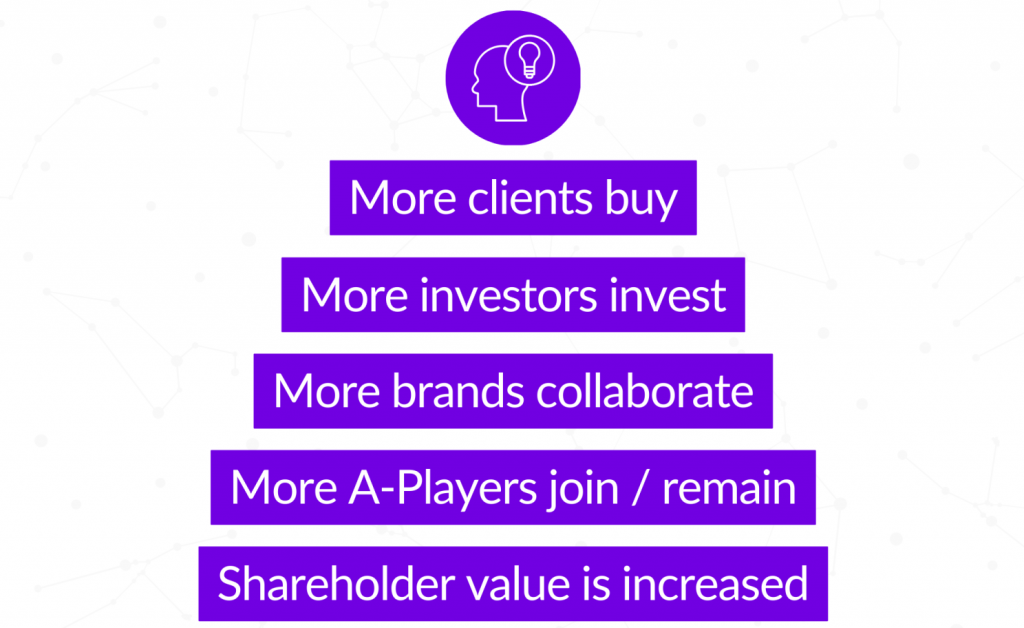
As an added bonus for the CEO that pulls this off,
your peers envy you and you have better options post-exit.
CEO reputation accounts for nearly half of your brand’s total reputational worth.
Adam Petrilli, CEO Insider
Fortunately you needn’t have invented the iPhone to forge a personal brand that moves the needle on the metrics that matter:
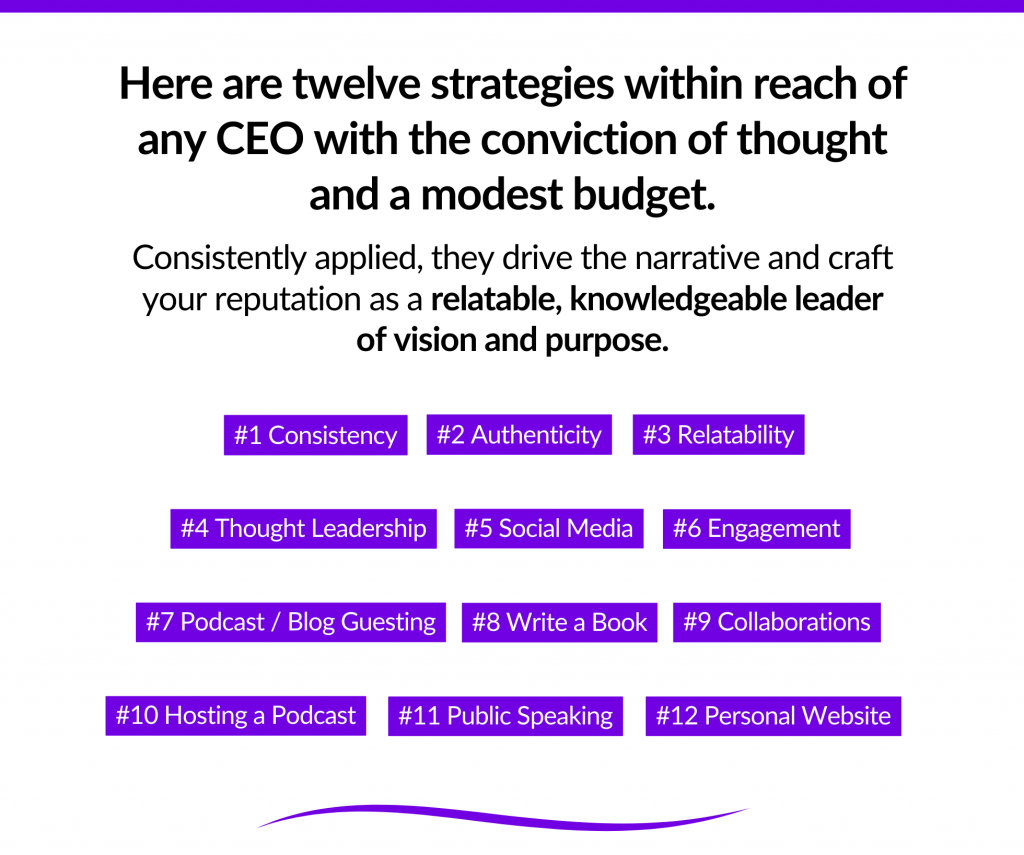
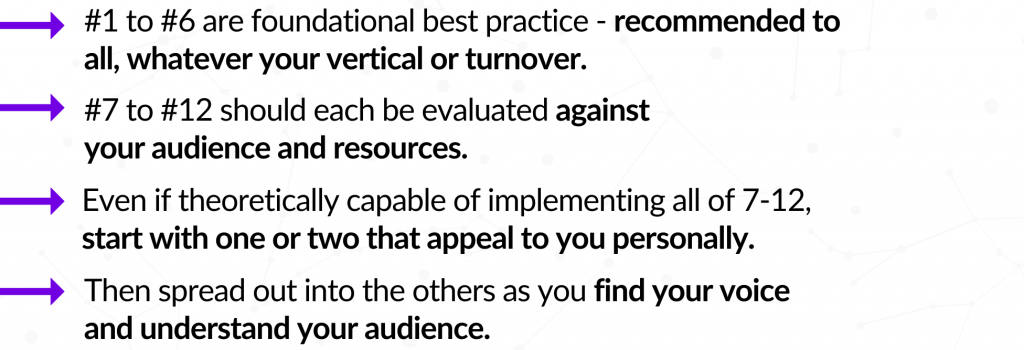
Whichever lane(s) you move into, repetition in each channel is crucial. Be persistently present and your brand will inexorably grow.
The harder I practice, the luckier I get.
Jerry Barber
how the Best Do it:
- Copy this spreadsheet.
- List every CEO with a strong personal brand.
- Score each one against the brand building strategies.
- From 0 for ‘Not doing it at all’, to 10 for ‘Simply Peerless’.
I guarantee you, the top performers will score highly across all of #1-#6, plus a handful if not all from #7-#12.
Many will have outsourced #4 and #5 entirely if discreetly (unless they tell you, and many are open about this, it’s very hard to tell).
You don’t have to emulate Alex Hormozi, Gary Vaynerchuk or Steven Bartlett in quantity or even quality. They’ve been firing on all cylinders for a loooong time and have slick, experienced content teams behind them.
However, adopt even a fraction of the techniques described below and you’ll have the edge on the majority of your competitors (61% of CEOs don’t even have a social media presence).
Are you ready to grow your personal brand?
#1. Strategic Consistency
Apple, Coca-Cola, Nike, Louis Vuitton, McDonald’s… you see their logo, you instantly know what to expect.
Why?
Because they meticulously plan, then execute with pixel perfect regularity.
Great things are achieved by doing simple things consistently well.
As a result, their identity is firmly imprinted into the public psyche.
Happily, it’s a simple three steps to also walk the walk of strategic consistency:
STEP 1
Draw up a plan as if launching a flagship product (which you are):
- Objectives
- Positioning
- Tone of voice
- Visual identity
- Target audience
- Channel strategy
- Content schedule
- Priority media tiers
- KPI’s – optional but useful*
* for accountability if your personal branding is being charged as a business expense

STEP 2
Use your StratPlan as a point of reference:
- To plan and produce content.
- To brief designers & ghostwriters.
STEP 3
- Review regularly, adapt accordingly
You can change the Plan, but you can’t deviate from the Plan.
PRO TIP
Your visual identity needn’t be too sophisticated.
- If too polished, this can be counterproductive by bringing your corporate credentials to the fore.
- You could invest in a professional designer or simply do it yourself in Canva, per mine below:

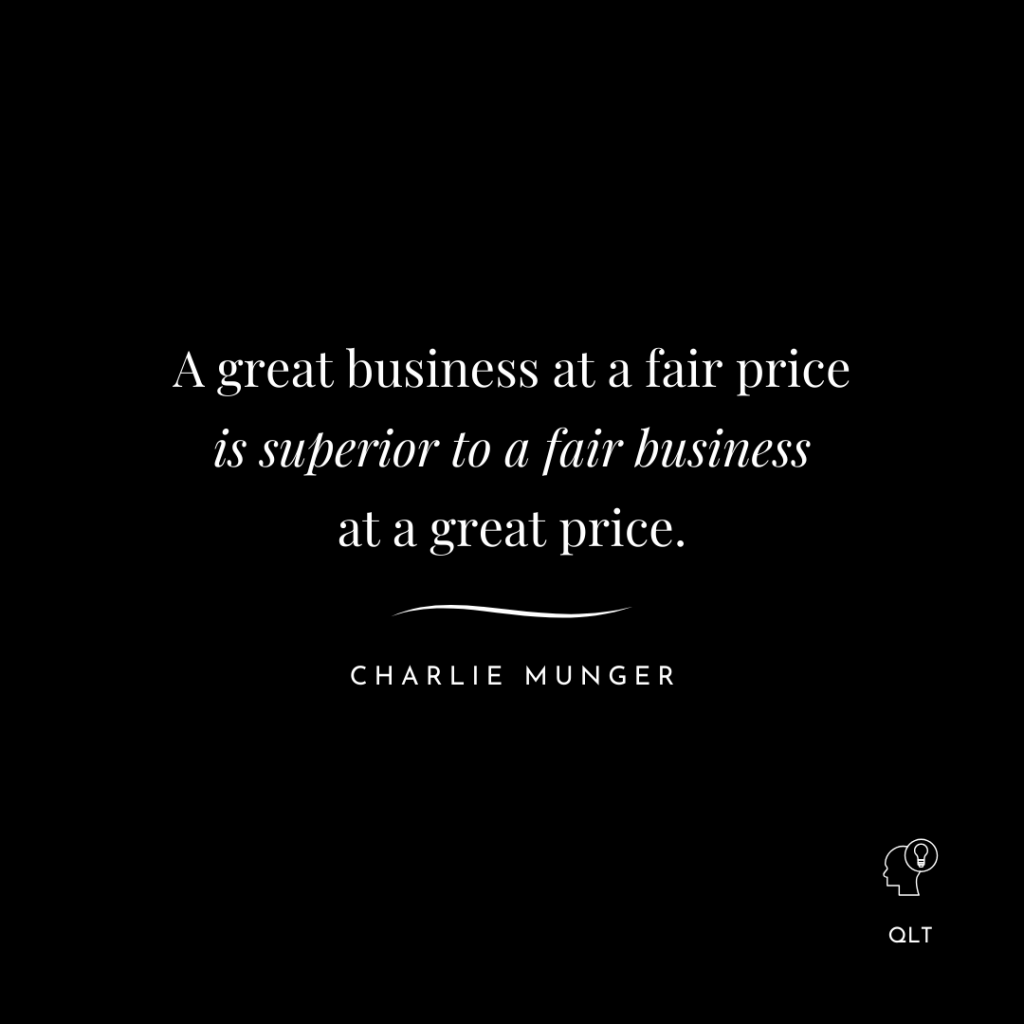

- If you have a professionally produced logo, use it sparingly on social media.
#2. Unerring Authenticity
- A massive 90% of consumers say authenticity is important when deciding which brands they like and support.
- Yet 51% believe less than half of brands create content that resonates as authentic. This is a golden opportunity for those able to be authentic without fail.
It’s as simple as being consistent in what you stand for and telling it like it is, even when this involves an inconvenient truth. Consumers categorically hate it when they sense you’re not being straight with them. If you’re not, this will inevitably come out. You can’t fool all of the people all of the time.
Here are three simple steps to authenticity:
STEP 1 – STRATEGISE
- Be intentional and strategic about what you share.
- Share failures as well as successes. Corporate PR invariably present a glossy ‘everything is perfect’ image that reeks of inauthenticity. Nothing is perfect, and your audience is not stupid.
STEP 2 – COMMIT
- Ensure you’re always true to this voice.
- If in doubt, it’s better to say nothing. Although in crisis situations where a timely response is expected of the CEO, you may not have a choice.
STEP 3 – AVOID
- Remove corporate jargon from your vocabulary. Be direct and simple in how you talk and write.
- Think of how politicians talk. Avoid this at all costs.
- Talk to every person as if a trusted friend. You’re not trying to sell or persuade, you’re here to Educate, Entertain and Inspire.
#3. Relatable Personality
Whilst the overarching goal is to create shareholder value, your personal brand is about being relatable and establishing emotional connections.
Share your lifestyle, experiences, and passions to connect with your audience on a human level.
“Consistent with previous studies, the emotional and human dimensions of content within personal social media posts[…] were found to be crucial in attracting users’ attention in the form of likes and comments as compared with posts featuring a commercial element.”
– 2021 case study of Vivy Yusof, a fashion CEO with 1.8 million Instagram followers
That said…
- Don’t overshare
- Where applicable, your partner and children’s preferences on what is shared should obviously be considered from day one
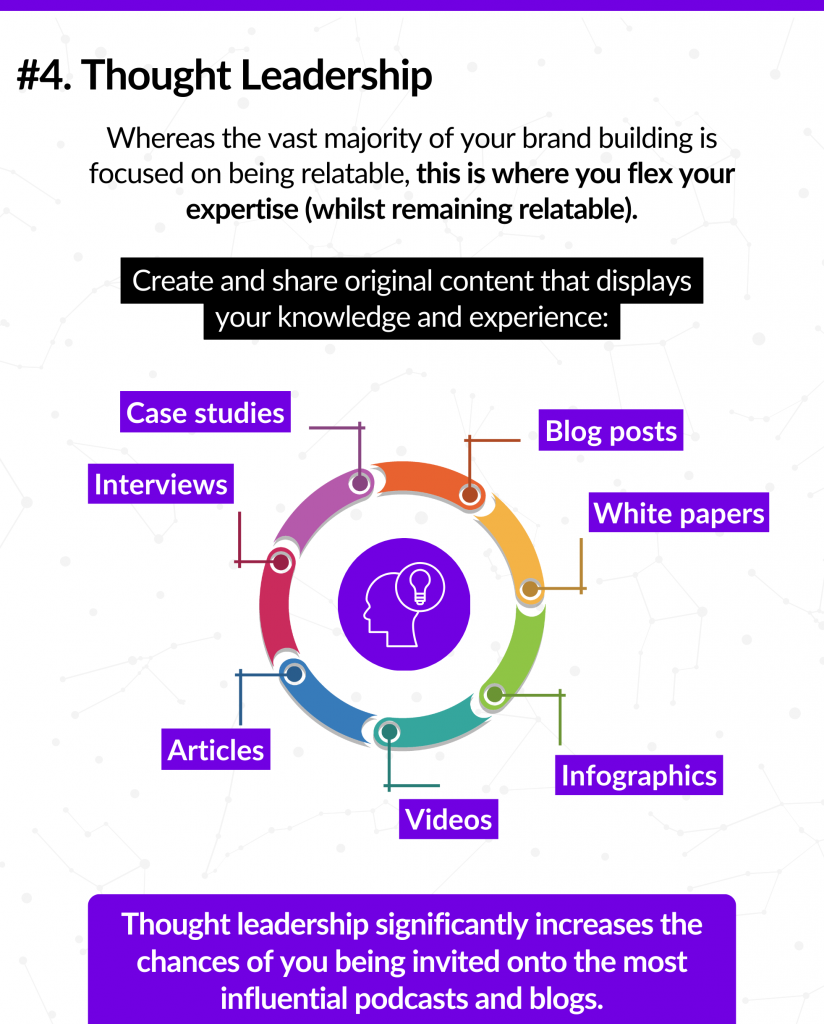
Here are three steps to making your mark as a thought leader:
STEP 1 – IDEATION
- Identify your target audience, and what matters to them.
- Use a Content Matrix to brainstorm ideas.
- Choose 1-3 topic areas and remain within those lanes for at least the first 6 months.
- I recommend the Lean Writing technique:
- Brainstorm ideas and publish all but the worst as shortform posts on LinkedIn or X.
- Identify the most popular posts to expand into long form content.
- Your content should do one or more of: Educate, Entertain or Inspire. This is not the place to wax lyrical about how great your company is.
- If time is limited consider using a ghostwriter.

STEP 2 – CREATION
- Talk to your audience in their language.
- Ensure your narrative is accurate and supported by data, statistics and case studies.
- Make your content as evergreen as possible, so you can re-post it over the years and it will still be relevant.
- Invest time in formatting and presentation. This has a major impact on whether people read all the way through – also the LinkedIn algorithm punishes poorly formatted posts.
STEP 3 – DISTRIBUTION
- Identify priority media channels (consumed by your target audience).
- Repurpose across several formats to get the most out of it.
- After several months, feel free to repost – this is why focusing on evergreen subjects pays dividends.
If time is limited consider using a ghostwriter, who can manage all three steps for you – although I’recommend you respond directly to comments.
#5. Social Media
- 82% of people are more likely to trust a company whose high-ranking executives actively use social media.
- Yet nearly 61% of CEOs lack a social media presence.
It’s self-evident you should be active on at least one social media platform (beyond merely posting thought leadership content).
At present, I’d recommend LinkedIn, unless your industry is heavily image based, whereby there may be a case for Instagram.
For each platform:
- Understand its rules, algorithm and culture.
- Establish a sustainable publishing schedule.
- Every post should do one or more of Educate, Entertain or Inspire.
- Monitor analytics and double down what works
- Interact with your audience by responding to comments, initiating discussions, and participating in group dialogues.
Whilst a ghostwriter could create original content in your name, replies to comments should come from you.
#6. Engagement
This overlaps with #5 (Social Media) but also includes your blog, podcast, webinars or forums.
Whilst time consuming, think of it as networking at a black tie event – when engaging with a fellow executive or investor, you’d give them your undivided attention, responding courteously and promptly.
Done consistently and authentically, engagement will earn you priceless goodwill with your customer base.
Some guidelines:
- Be Prompt: Ensure timely replies to all comments, messages, and queries.
- Be Grateful: Thank them for engaging with your content.
- Be Useful: Share useful tips and actionable knowledge.
- Be Friendly.
- Be Responsive: Solicit feedback to refine your approach. This also makes you humble and approachable.
- Be Proactive: Host webinars or question-and-answer sessions to provide a platform for your audience to interact directly.
#7. Guesting
There are over 4.25 million registered podcasts and 600 million blogs worldwide. The biggest ones are media juggernauts with a greater, more engaged following than the leading TV networks.
An appearance on one of the big hitters like the Joe Rogan Experience, Diary of a CEO or Impact Theory, can transform your profile overnight. But unless your corporate or personal brand are already well known, or your industry is particularly topical because of a recent newsworthy event, it’s unlikely you’ll get onto a ‘top tier’ show.
Look at it from their perspective:
- What’s in it for them to feature you as a guest?
- What do you offer?
- Are you interesting / credible?
With 604m+ options to peruse, there will be many with sufficient reach to warrant connecting with, whilst not so big that you’d be way below their radar.
Regardless of the size of the audience, prepare for every guest appearance like you would an important investment pitch or ‘rally the troops’ meeting.
- Have anecdotes ready to show off your relatability and likeability.
- Know exactly where your company is up to on financial metrics, marketing activity and public relations. Few things are as excruciating as an out of touch CEO.
- Practice on camera, then watch yourself. Body posture and vocabulary are completely different when experienced as a third person. If necessary, invest in a body language / public speaking coach.
#8. Write a Book
Even though a book is essentially a long article, being able to say you’re a published author adds much kudos to your brand.
And yes – self-publishing on Amazon counts.
As with articles:
- Choose a topic that fits your brand profile
- Utilise the ‘Power of One’ – have one powerful message that holds the book together, aimed at one specific avatar
- Develop an outline and organise your content
- Conduct research and gather data to support your ideas
- This could be ghostwritten for you
Unlike articles:
- Hire a professional editor to review and polish your work.
- Invest in a designer. This is one area where consumers not only forgive but expect the pixel perfect presentation of a professional.
#9. Collaborations
Engaging with fellow thought leaders through networking and collaboration can be a highly effective strategy:
- Joint endeavours such as research projects, podcasts, or co-authoring books.
- Collaborations naturally lead to mutual promotion of each other’s work, further increasing your visibility and impact.
- It opens doors to new learning experiences, idea sharing, and valuable connections.
#10. Start a Podcast
This is one of the most challenging routes to brand building.
- Not everyone has the bandwidth nor personality to host a regular podcast.
- Unlike many of the other strategies, you can’t simply hire a ghostwriter or designer to do it for you.
But because it defeats most who try it, if you persevere, you’ll easily stand out from your non-podcasting peers.
This is an excellent starting point:
https://www.buzzsprout.com/blog/how-to-start-a-podcast
[This is not an affiliate link – I have no commercial relationship with Buzzsprout.]
Your podcast needn’t be a Joe Rogan style 3 hour conversation.
According to River FM, the ‘best’ podcasts are between 20 and 40 minutes long – the free tier on Buzzsprout would cover 4 x 30 minute episodes per month.
In deciding the length, consider the following about your target audience
- Age / Gender
- Work schedule
- Educational background
Benefits
- The spontaneity of open conversation over 20+ minutes gives you a colossal window in which to convey Authenticity, Relatability and Thought Leadership. Few other formats come close (perhaps writing a book, but that lacks the energy of live conversation).
- If your podcast picks up momentum, you’ll find yourself being invited to guest on other high profile shows
- You benefit from association with any well known guests.
Equipment
- Don’t get hung up on equipment at the outset. Many a great podcast or Youtube channel was founded with just a smartphone to record the footage.
- That said, I strongly recommend you immediately invest in a decent microphone (this is not an affiliate link, I receive no commission if you buy from it). People will forgive shaky visuals but bad audio will have them moving swiftly on. Even if they remain, the image it projects is not that of an accomplished CEO in control of their environment.
#11. Public Speaking
Speaking at conferences and events helps to increase your visibility and gives you privileged control of the audience’s attention.
And of course they’re a tremendous opportunity to network and engage with other speakers and attendees.
#12. Personal Website
Investors and venture capitalists fund the founders of a startup because they believe in them and they like you as a person. If an investor can’t even find a website about the founder of a potentially interesting startup idea, they won’t be coming to you.
– Claire Bahn, CEO Claire Bahn Group
The public perception of CEOs who maintain personal websites can vary widely, but there are several common themes that tend to emerge:
- Transparency and Accessibility: It provides a platform for you to share thoughts, insights, and visions directly with the public, employees, and stakeholders. This direct line of communication can foster a sense of openness and trust.
- Professional Image and Branding: A well-designed and informative personal website enhances your professional image.
- Engagement and Thought Leadership: They’re useful for engaging with broader industry conversations, sharing your expertise, and positioning you as a thought leader.
- Personal vs. Corporate Interests: There can be concerns about the balance between your personal branding and the interests of your company. Stakeholders (notably but not exclusively shareholders and employees) might question if the website focuses too much on personal achievements or perspectives at the expense of the company’s broader goals and messaging.
- Digital Savvy: In today’s digital age, a CEO with an active online presence can be seen as being more digitally savvy and in tune with modern communication trends. This is often viewed positively, especially by younger demographics.
- Risk of Overexposure: There is a risk this might expose you to increased scrutiny.
Whilst a personal website can be a powerful tool to build your brand, it requires careful management to ensure that it positively contributes to both your personal and your company’s image.
Executive Summary
These are twelve simple strategies for building a powerful CEO brand that adds shareholder value:
- Strategic Consistency
- Unerring Authenticity
- Relatable Personality
- Thought Leadership
- Social Media
- Engagement
- Guesting
- Write a Book
- Collaborations
- Start a Podcast
- Public Speaking
- Personal Website

It’s nearly impossible to separate what the CEOs say and do with the image, authority and perception of the companies they lead, making CEO reputation a top priority for anyone seeking to preserve and protect brand integrity.
Adam Peterill, CEO World
